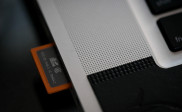Get to Know the Macro Lens
What is a Macro Lens?
SLR (Single Lens Reflex) and DSLR (Digital Single Lens Reflex) cameras have removable lenses, as opposed to point-and-shoots or compact cameras where the lens is fixed. This allows you to use lenses that have specific functions in capturing images. The macro lens is a specialty lens that enables you to take clear and defined photos of tiny subjects by magnifying them in the image frame.
Magnification Properties of the Macro Lens
In macro lens terminology, magnification refers to the size of the subject as captured on the camera sensor compared to how big it is in reality. For example, if the macro lens magnifies a subject at 1:4 ratio, it means that the subject is enlarged by 25% or a quarter bigger than its actual size. If your lens is a ‘true macro,’ then it is capable of magnifying the subject at 1:1 ratio, which means that the subject’s actual size is captured in the camera sensor.
A macro lens can greatly magnify a subject, depending on the focusing distance and the focal length. The closer the macro lens is to a subject, the larger the subject becomes. Also take note that the longer the focal length, the closer and more magnified the subject appears. Macro lenses with a long focal length such as the 180mm, can take macro images that are clear and sharp, even if they are at a distance from the subject.
Bear in mind that magnification may be important, but in terms of filling up the frame with a tiny subject, the size of a camera’s sensor is ultimately the deciding factor. A compact camera with a smaller sensor, compared to a full-frame camera, will have more success in filling up the image frame with the subject. A full-frame camera will still show more space around the subject, even if it has been magnified equally at the same size as by the point-and-shoot.
Working Distance of a Macro Lens
A macro lens with a 50-60mm focal length requires a close working distance (the distance between the subject and the front of your lens) between the lens and the subject in order for the subject to remain in focus. This may be ideal for inanimate objects and product shots of jewelry, but it is less so for tiny and shy creatures that might become terrified and escape the lens’ close proximity. It might also be a challenge for you to provide light as your subject can be lost in the shadow of your looming lens.
A macro lens with a 90mm-200mm focal length is great for capturing those timid little creatures, because it can still take macro photos even from as far as a foot away. The bigger space between the lens and the subject also allows more light to adequately illuminate the subject.
The macro lens would be a fantastic addition to your camera gear, especially if you enjoy shooting extreme close-ups of bugs, flowers, and other tiny objects. However, this piece of glass does not come cheap; the price can range from hundreds to thousands of dollars depending on the model, brand and quality. Still, it can be well worth the cost once you see the stunning and fascinating image results from using this type of lens.
Check the macro lens here:
Canon EF-S 60mm f/2.8 Macro USM Digital SLR Lens for EOS Digital SLR Cameras
Canon EF 100mm f/2.8 Macro USM Lens for Canon SLR Cameras
Sigma 70-300mm f/4-5.6 SLD DG Macro Lens with built in motor for Nikon Digital SLR Cameras
Nikon 60mm f/2.8D AF Micro-Nikkor Lens for Nikon Digital SLR Cameras






